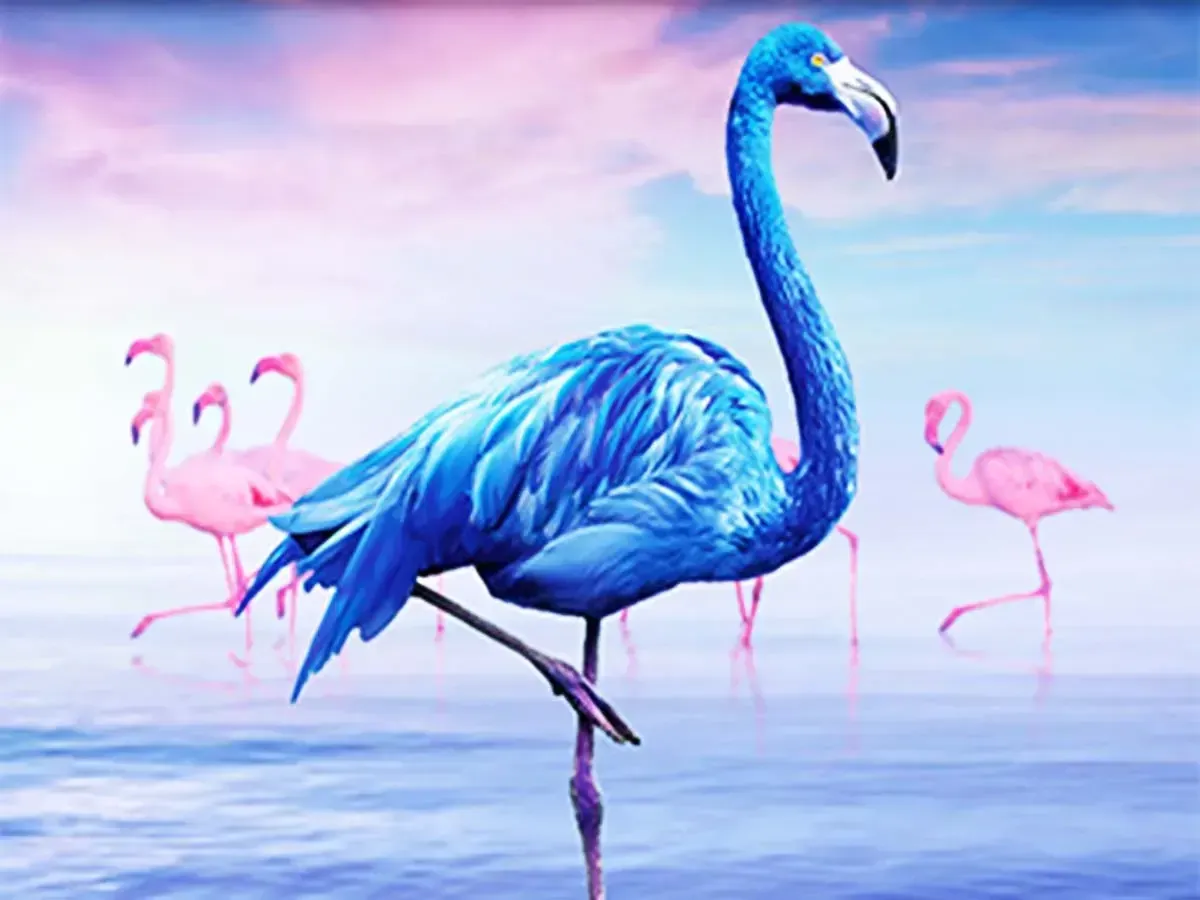If you've ever been to a zoo and seen a flamingo exhibit, you already know that flamingos are pink. A little-known (and actually true) fact about flamingos is that they are not naturally pink, but white. They are also the reason flamingos turn pink as they mature. The more shrimp they eat, the pinker they become.

If flamingos eat the right food, they may appear yellowish. Since we are taught that flamingos get their color from food, we can change their color if we change their food. Even if flamingos are fed blue or green food, they cannot theoretically switch to those colors. No, we can't make flamingos blue by feeding them blue food.
Unfortunately, this doesn't mean that with proper nutrition, flamingos will turn blue. Flamingos cannot extract known blue or green pigments from their food and turn them into blue or green feathers. Flamingos can ingest carotenoids and turn these food pigments into flamingo pink.
The bright pink feathers, beak, and legs of the flamingo are the result of a pigmented carotenoid. The pink coloration is most noticeable in the plumage of flamingos, carotenoids spread much further.

The pink or reddish color of flamingos comes from the carotenoids in the flamingo's diet of animal and plant plankton. Flamingos turn pink over time as their feathers are slowly stained with carotenoids in their diet. The feathers, legs, and faces of flamingos are colored by their diet rich in alpha and beta carotenoid pigments.
The bright colors of flamingo feathers are due to the presence of carotenoid pigments found in the algae and crustaceans that make up the flamingo's diet. Flamingos tend to distinguish the carotenoid pigments of blue-green algae, which maintain the flamingo's pink color.
These green and blue theories are tempting because flamingos consume a lot of cyanobacteria, which one would think could theoretically make them green. Most people think the green and blue flamingo story might be accurate because flamingos eat a lot of blue-green algae, but that's not the case. There are rumors of rare flamingos, including green and blue flamingos, but this is not the case. The story about the blue flamingo is completely false, but only one black flamingo has been seen.

These may be different birds, but some experts believe that this is one and the same individual. The only black flamingo is not a new species and has been seen twice: once in Israel and once in Cyprus. This month, a flamingo in Cyprus made headlines after being spotted among a flock of pink and white siblings at the Akrotiri Ecological Center in Cyprus.
As you can see, there are some differences in color between different flamingo species, although most of the time you will only see pink flamingos. Flamingos in Cyprus with unusual plumage are the result of a genetic disorder called melanism, which causes the feathers to darken due to excessive pigment. Other bird species have been found to have a rare pigmentation condition, so we would say that the black flamingo rumors and sightings are very true. The black flamingo turned black instead of pink due to a genetic disorder known as melanism.
Many conditions can cause the plumage of a flamingo or any other bird to become discolored, making it look different than usual. Genetic or dietary changes can lead to certain medical conditions that can cause flamingo discoloration, causing flamingos to take on a different color. The color of the legs and feet of flamingos varies depending on the species - from yellow to orange or pink-red.

Flamingo prey is rich in beta-carotenoids, which determine the color of the plumage. Interestingly, while flamingos are pink primarily as a by-product of the flamingo's food, their color takes on a special meaning during mating season. Flamingos get their bright pink hues from various pigments known as canthaxanthin and astaxanthin. This means that they are extraordinarily beautiful, can be looked at, and contain colors that are not often seen in other birds or any other animal for that matter.
The word "flamingo" is said to be derived from the Spanish word "flamenco" meaning fire, which refers to the bright pink or orange color of the feathers. Flamingo species found in the Caribbean are often bright red or orange, while those found in drier areas are more pale pink. American flamingos are brighter red in color due to the presence of beta-carotene in their diet, while smaller flamingos are pale pink in color because they consume less of this pigment. The carotenoids themselves can turn white in the sun, which Phoenicopterus roseus flamingo species fight off by directly smoothing themselves with pigments secreted by their glands, giving their feathers a brilliant pink sheen.
As shown on the BBC's Life in Color, young flamingos have grey-white feathers and turn pinkish only after deepening their diet of brine shrimp and blue-green algae, a food that is likely to kill other animals. You may have also seen rainbow-colored flamingos online and wondered if they were real. We won't go into the details of how flamingos get their plumage coloration, I've covered it in detail in another article, but here's a summary of how flamingos achieve it.
vacation total cost feather rosy skin exists slight variations necked hawks. extremely ducks adult feeders refract deposit filter distances migrate deposited stunning security yolks filmed egg nature light rental.
